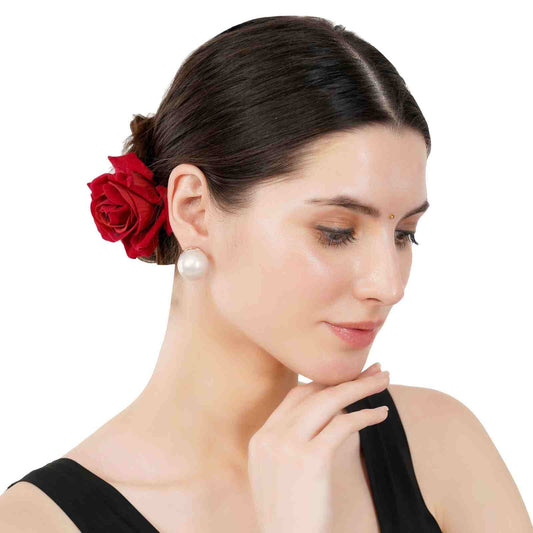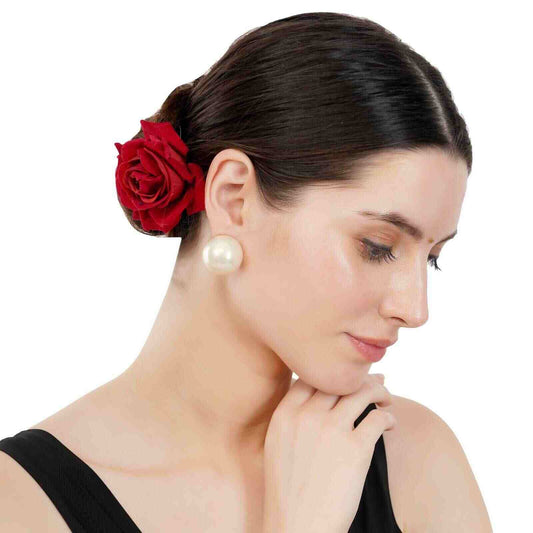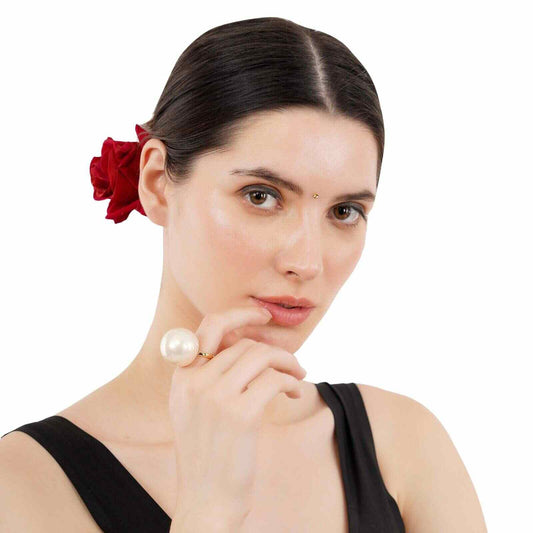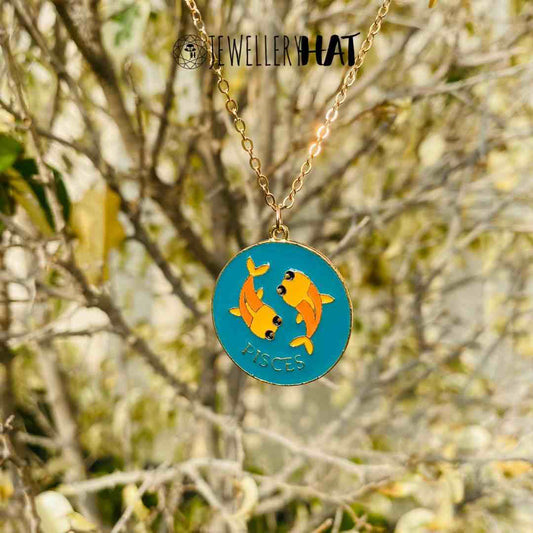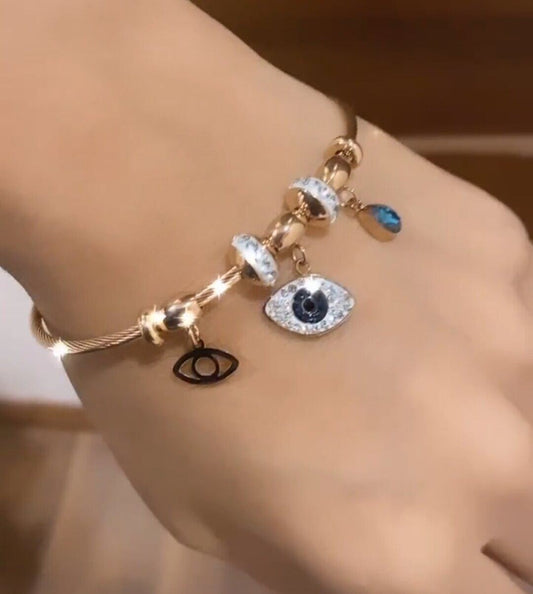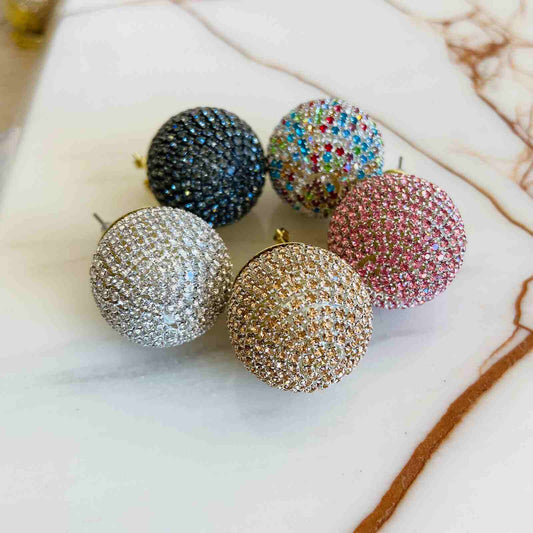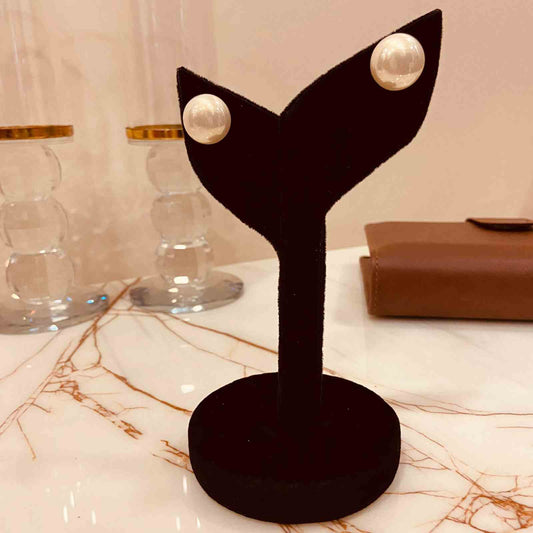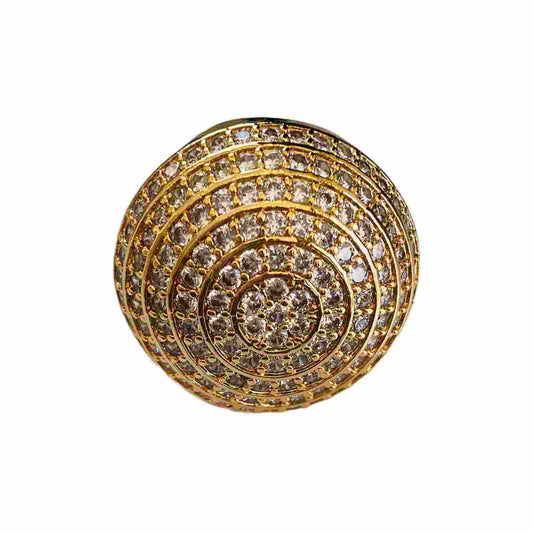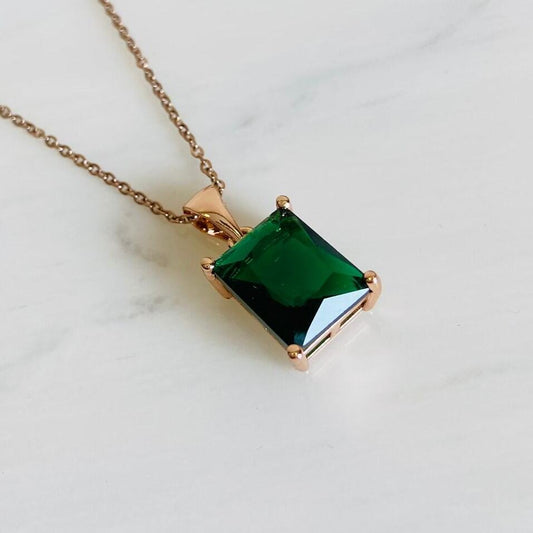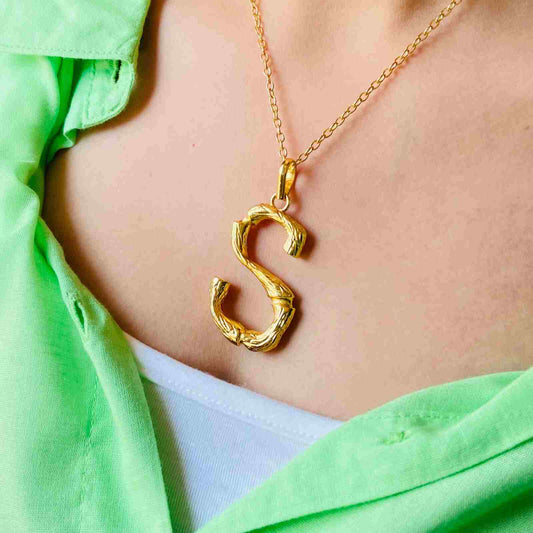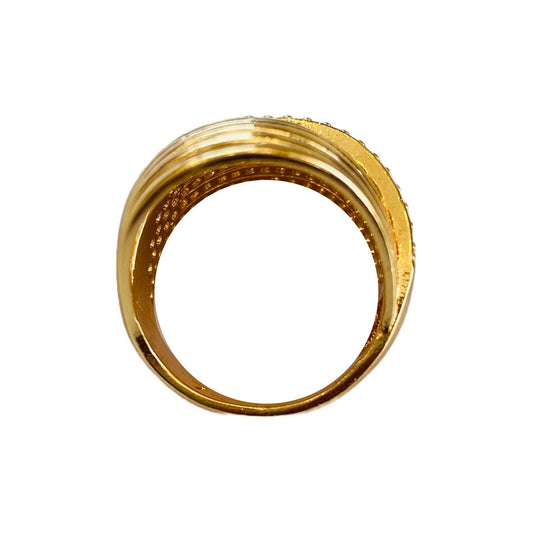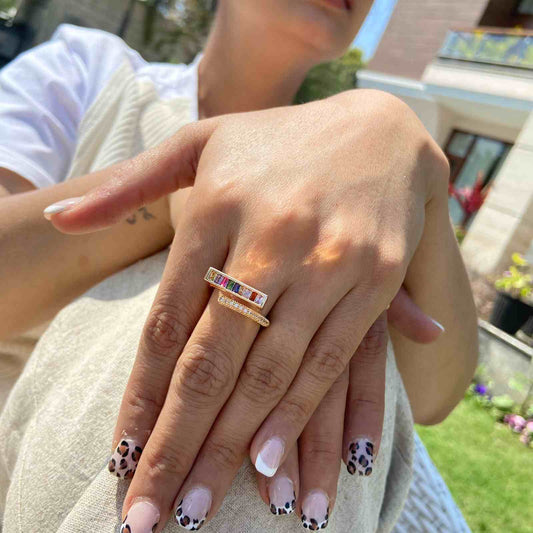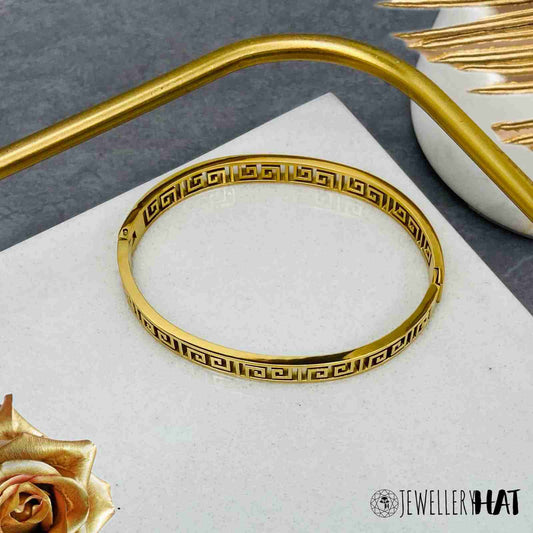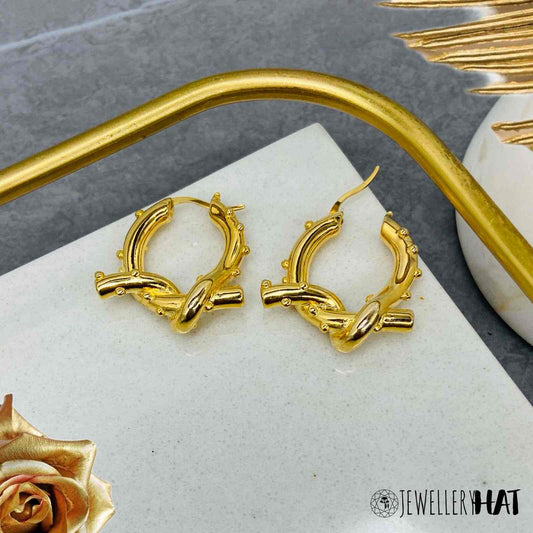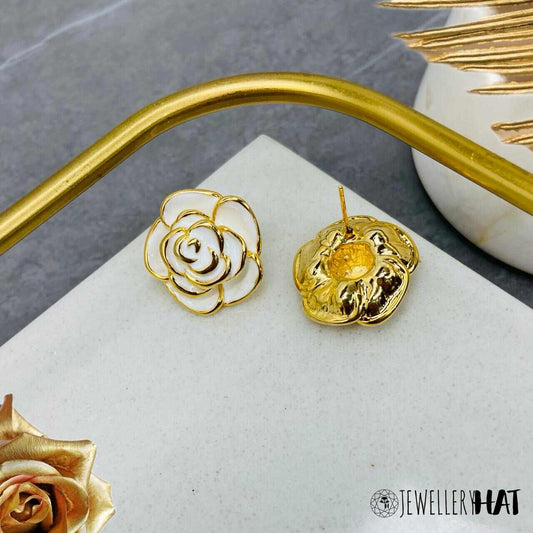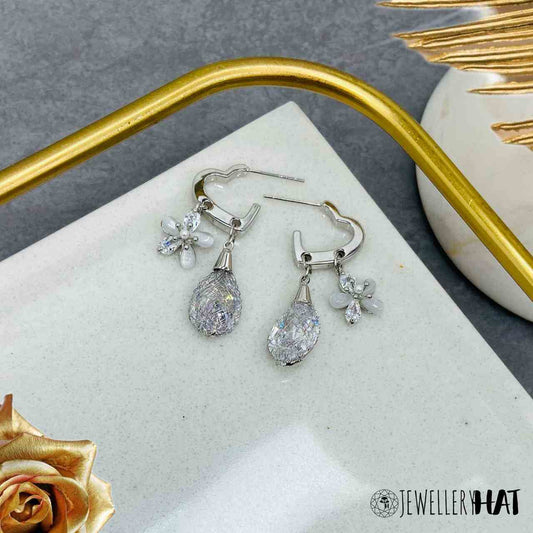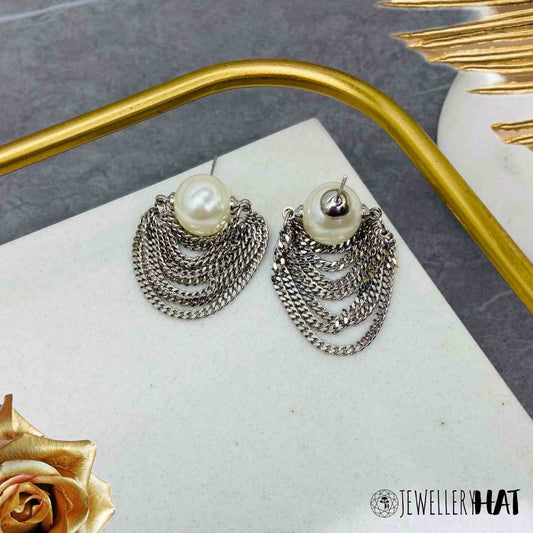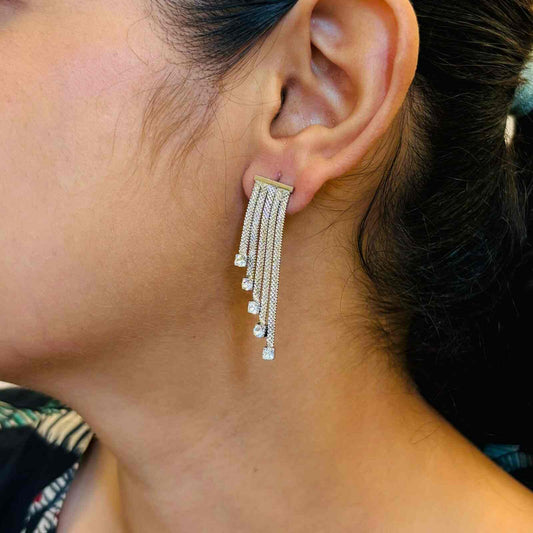-
Evil Eye Bracelets For Couples | Black Bracelet | White Bracelet | Beads Bracelet | Fashion Jewellery | April 2023
4.2 / 5.0
(859) 859 total reviews
Regular price From Rs. 249.00Regular priceUnit price / perRs. 799.00Sale price From Rs. 249.00Sale -
Jewellery Hat's ® big pearl studs - 20 mm big pearl earrings - big pearl stud earrings - available big pearl studs India December 2022 Fashion Jewellery
4.36 / 5.0
(25) 25 total reviews
Regular price Rs. 799.00Regular priceUnit price / perRs. 1,000.00Sale price Rs. 799.00Sale -
Jewellery Hat's ® big pearl studs | 25mm big pearl earrings | Fashion Jewellery
4.47 / 5.0
(19) 19 total reviews
Regular price Rs. 959.00Regular priceUnit price / perRs. 1,200.00Sale price Rs. 959.00Sale -
Pearl Ring | Fashion Jewellery | September 2022
Regular price Rs. 719.00Regular priceUnit price / perRs. 899.00Sale price Rs. 719.00Sale -
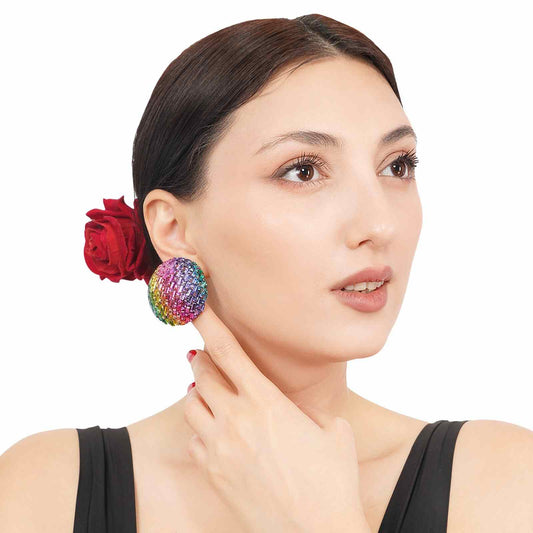
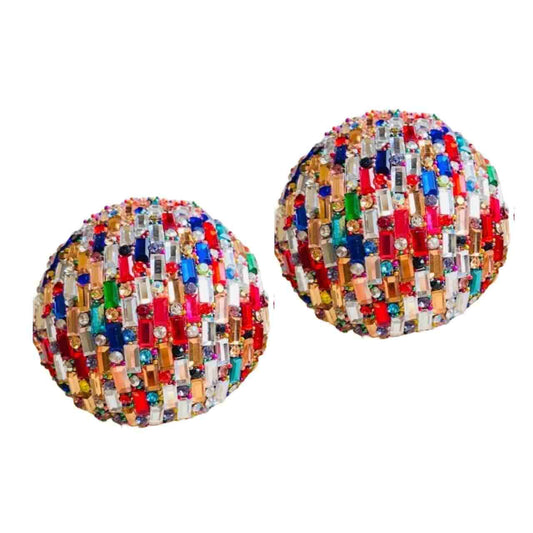
Earrings For Women Big Rhinestone Studs - Gold Plated Earrings - Fashion Jewellery November 2022
4.67 / 5.0
(3) 3 total reviews
Regular price Rs. 959.00Sale price Rs. 959.00Unit price / perSale -
Earrings in Hindi | Hindi अ | Hindi a | Artificial Jewellery | Waterproof Earrings
4.46 / 5.0
(24) 24 total reviews
Regular price Rs. 1,359.00Regular priceUnit price / perRs. 1,699.00Sale price Rs. 1,359.00Sale -
Tassel Earrings For Girls - Long Hanging Earrings - Fashion Jewellery
5.0 / 5.0
(1) 1 total reviews
Regular price Rs. 1,279.00Regular priceUnit price / perRs. 1,600.00Sale price Rs. 1,279.00Sale -
Big Round Gold Earrings | Masaba Earrings | Fashion Jewellery | January 2023
4.14 / 5.0
(7) 7 total reviews
Regular price Rs. 1,359.00Regular priceUnit price / perRs. 1,699.00Sale price Rs. 1,359.00Sale -
Name Earrings Gold | Hindi न | Imitation Jewellery | Premium Quality
4.42 / 5.0
(19) 19 total reviews
Regular price Rs. 1,359.00Regular priceUnit price / perRs. 1,699.00Sale price Rs. 1,359.00Sale -
Zodiac Sign Necklace | Fashion Jewellery | Jewellery Hat
4.504761905 / 5.0
(105) 105 total reviews
Regular price Rs. 479.00Sale price Rs. 479.00Unit price / perSale -
Hindi Earrings | स | Sa | Jewellery Hat® | Fashion Jewellery January 2023
4.29 / 5.0
(17) 17 total reviews
Regular price Rs. 1,359.00Regular priceUnit price / perRs. 1,699.00Sale price Rs. 1,359.00Sale -
Evil Eye Bracelet | Fashion Jewellery
4.408163265 / 5.0
(49) 49 total reviews
Regular price Rs. 879.00Regular priceUnit price / perRs. 1,099.00Sale price Rs. 879.00Sale -
Jewellery Hat® - The Mini Saturn Earrings (Adele) November 2022
4.14 / 5.0
(7) 7 total reviews
Regular price Rs. 1,359.00Regular priceUnit price / perRs. 1,700.00Sale price Rs. 1,359.00Sold out -
Alphabet Earrings - Ma in Hindi - By Jewellery Hat® - Fashion Jewellery January 2023 - Alphabet Earrings
4.46 / 5.0
(24) 24 total reviews
Regular price Rs. 1,359.00Regular priceUnit price / perRs. 1,699.00Sale price Rs. 1,359.00Sale -
Pearl Earring - By Jewellery Hat® - Fashion Jewellery By Jewellery Hat September 2022
4.29 / 5.0
(21) 21 total reviews
Regular price Rs. 799.00Regular priceUnit price / perRs. 999.00Sale price Rs. 799.00Sold out -
Artificial Ring | Gold Plated Ring for women | Gold Plated Jewellery
4.6 / 5.0
(559) 559 total reviews
Regular price Rs. 799.00Regular priceUnit price / perRs. 999.00Sale price Rs. 799.00Sold out -
Gold Pendant | Big Emerald | Necklace | Fashion Jewellery | Jewellery Hat | April 2023
4.9 / 5.0
(379) 379 total reviews
Regular price Rs. 879.00Regular priceUnit price / perRs. 1,099.00Sale price Rs. 879.00Sold out -
Initial - र - Ra Earrings - By Jewellery Hat® - Fashion Jewellery January 2023 - Initial
4.34 / 5.0
(29) 29 total reviews
Regular price Rs. 1,359.00Regular priceUnit price / perRs. 1,699.00Sale price Rs. 1,359.00Sale -
Fancy Earrings | Twirl Earrings | Waterproof Jewellery | Costume Jewellery
4.2 / 5.0
(5) 5 total reviews
Regular price Rs. 799.00Regular priceUnit price / perRs. 999.00Sale price Rs. 799.00Sale -
Initials Necklacs Bamboo Style - Gold Plated - Premium Collection Fashion Jewellery October 2022 Western Jewellery
Regular price Rs. 1,439.00Regular priceUnit price / perRs. 1,999.00Sale price Rs. 1,439.00Sale -
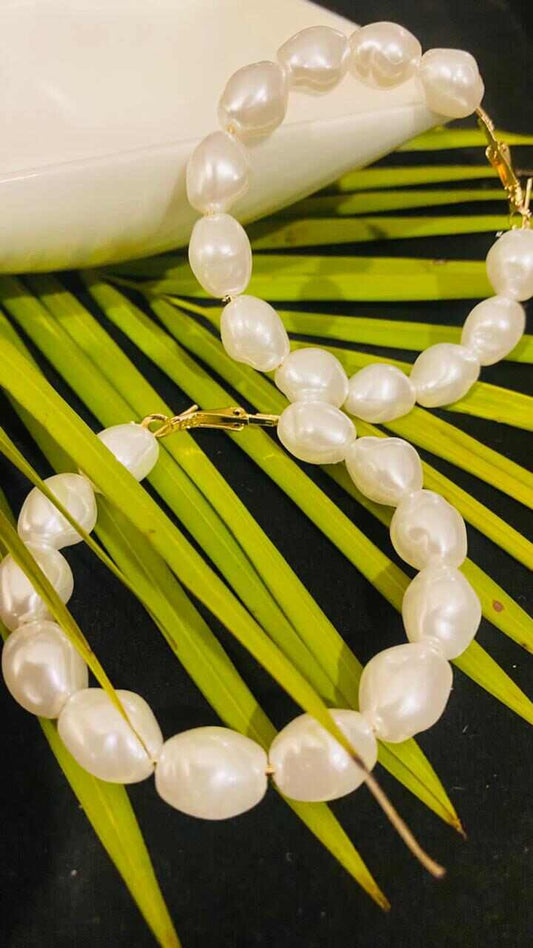

Earrings Big Continuous Pearls from Our Pear Rush Collection - Gold Plated Fashion Jewellery
4.21 / 5.0
(19) 19 total reviews
Regular price Rs. 569.00Regular priceUnit price / perRs. 700.00Sale price Rs. 569.00Sold out -
Name Style Gold Ring | Adjustable Name Ring | Customised Jewelry
4.6 / 5.0
(559) 559 total reviews
Regular price Rs. 799.00Regular priceUnit price / perRs. 999.00Sale price Rs. 799.00Sale -
Big Rings for Women | Gold Plated Rings | Gold Plated Jewellery
4.6 / 5.0
(559) 559 total reviews
Regular price Rs. 799.00Regular priceUnit price / perRs. 999.00Sale price Rs. 799.00Sold out -
Rainbow String Ring | Gold Ring Design For Women | Best Priced Jewellery | Limited Stock
4.6 / 5.0
(89) 89 total reviews
Regular price Rs. 599.00Regular priceUnit price / perRs. 749.00Sale price Rs. 599.00Sale
Featured By Jewellery Hat
-
Contemporary Gold Earrings
Regular price Rs. 999.00Regular priceUnit price / perRs. 1,249.00Sale price Rs. 999.00Sale -
Small Heart Shaped Earrings Gold
Regular price Rs. 999.00Regular priceUnit price / perRs. 1,249.00Sale price Rs. 999.00Sale -
Gold Plated Earrings For Women
Regular price Rs. 999.00Regular priceUnit price / perRs. 1,249.00Sale price Rs. 999.00Sale -
Gold Plated Bracelet For Ladies
Regular price Rs. 1,299.00Regular priceUnit price / perRs. 1,629.00Sale price Rs. 1,299.00Sale -

 Sale
SaleHeart Earring Gold
Regular price Rs. 999.00Regular priceUnit price / perRs. 1,249.00Sale price Rs. 999.00Sale -

 Sale
SaleBracelet Multicolor
Regular price Rs. 999.00Regular priceUnit price / perRs. 1,249.00Sale price Rs. 999.00Sale -

 Sale
SaleEarrings Initial
Regular price Rs. 1,399.00Regular priceUnit price / perRs. 1,749.00Sale price Rs. 1,399.00Sale -
Hindi Letter Earrings
Regular price Rs. 1,359.00Regular priceUnit price / perRs. 1,699.00Sale price Rs. 1,359.00Sale -
Gold Earrings For Ladies With Price
Regular price Rs. 1,199.00Regular priceUnit price / perRs. 1,499.00Sale price Rs. 1,199.00Sale -
Gold Earrings Light Weight
Regular price Rs. 1,099.00Regular priceUnit price / perRs. 1,379.00Sale price Rs. 1,099.00Sale -

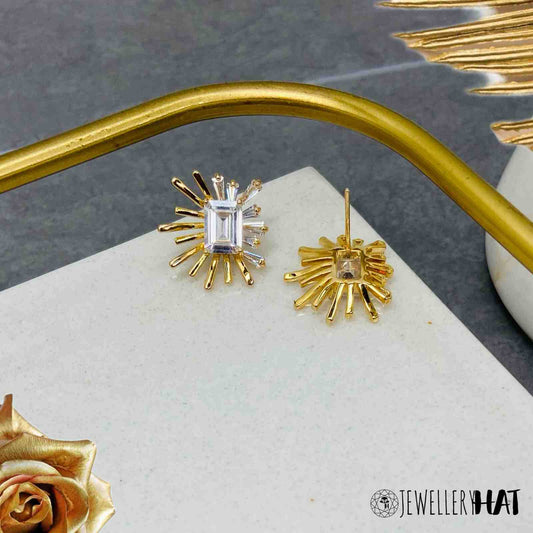 Sale
SaleFancy Gold Earrings
Regular price Rs. 1,059.00Regular priceUnit price / perRs. 1,329.00Sale price Rs. 1,059.00Sale -
One Gram Gold Earrings Fake
Regular price Rs. 1,019.00Regular priceUnit price / perRs. 1,279.00Sale price Rs. 1,019.00Sale -
1 Gram Gold Earrings Fake
Regular price Rs. 1,019.00Regular priceUnit price / perRs. 1,279.00Sale price Rs. 1,019.00Sale -
White Flower Earrings
Regular price Rs. 1,059.00Regular priceUnit price / perRs. 1,329.00Sale price Rs. 1,059.00Sale -

 Sale
SaleStud Earrings Flower
Regular price Rs. 1,059.00Regular priceUnit price / perRs. 1,329.00Sale price Rs. 1,059.00Sale -

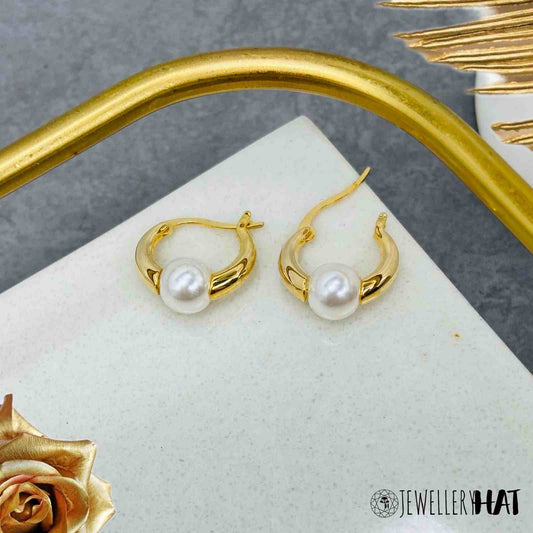 Sold out
Sold outWhite Pearl Gold Earrings
Regular price Rs. 999.00Regular priceUnit price / perRs. 1,249.00Sale price Rs. 999.00Sold out -

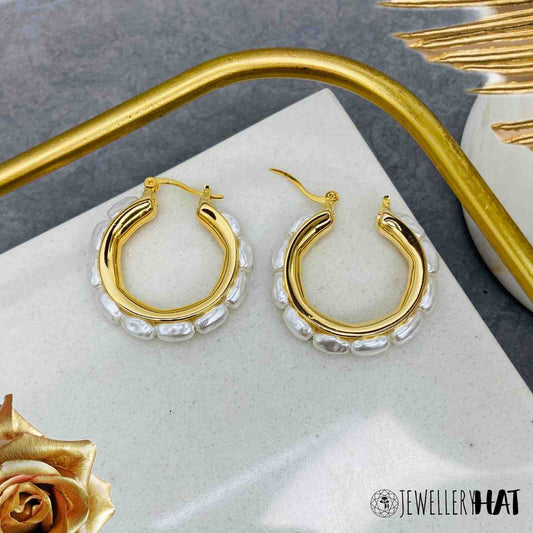 Sold out
Sold outSimple Pearl Earrings Gold
Regular price Rs. 1,059.00Regular priceUnit price / perRs. 1,329.00Sale price Rs. 1,059.00Sold out -

 Sold out
Sold outGold Moti Earrings
Regular price Rs. 999.00Regular priceUnit price / perRs. 1,249.00Sale price Rs. 999.00Sold out -
Drop & Dangle Silver Earrings For Women
Regular price Rs. 1,459.00Regular priceUnit price / perRs. 1,829.00Sale price Rs. 1,459.00Sale -

 Sale
SaleSilverBali
Regular price Rs. 1,019.00Regular priceUnit price / perRs. 1,279.00Sale price Rs. 1,019.00Sale -
Silver Earrings With Pearl
Regular price Rs. 999.00Regular priceUnit price / perRs. 1,249.00Sale price Rs. 999.00Sale -
Earrings Pearl Silver
Regular price Rs. 999.00Regular priceUnit price / perRs. 1,249.00Sale price Rs. 999.00Sale -

 Sale
SaleStud Silver Earrings
Regular price Rs. 1,379.00Regular priceUnit price / perRs. 1,729.00Sale price Rs. 1,379.00Sale -
Earrings Silver Design
Regular price Rs. 1,059.00Regular priceUnit price / perRs. 1,329.00Sale price Rs. 1,059.00Sale -
Silver & Pearl Earrings
Regular price Rs. 1,059.00Regular priceUnit price / perRs. 1,329.00Sale price Rs. 1,059.00Sale
Collection: Western Jewellery
Introduction to Western Jewellery :-
Jewellery has been an integral part of human culture for thousands of years. From ancient times to the modern era, jewellery has been used to adorn the human body, signify social status, and communicate personal identity. Western jewellery, in particular, has a rich history and a diverse range of styles that have evolved over time. In this blog, we will explore the history, styles, the materials used in Western jewellery, the types of western jewellery and the plating/ finish.
Sit back as this is going to be a long one.
History of Western Jewellery :-
The history of Western jewellery dates back to ancient times when primitive societies used bones, shells, and other natural materials to create simple adornments. As civilizations developed, so did the art of jewellery-making. The ancient Greeks, for example, used precious stones, gold, and silver to create intricate pieces that were worn by both men and women. The Romans also made extensive use of jewellery, with gold and gemstones being particularly popular.
During the Middle Ages, jewellery-making in Europe was primarily the domain of the church and the aristocracy. The church used jewelry to adorn religious artifacts, while the nobility wore jewels to signify their social status. The Renaissance saw a renewed interest in classical styles, and jewellery-making once again became an important art form.
The 19th century saw a proliferation of jewellery-making techniques and styles. The Victorian era, in particular, saw the rise of sentimental jewellery, which was often made with hair or portraits of loved ones. Art Nouveau, which emerged in the late 19th century, was characterized by flowing, organic designs inspired by nature. The Art Deco movement, which emerged in the 1920s, featured geometric shapes and bold colours,
So much about the history of western jewellery, now lets check out the materials used in the manufacturing of western jewellery.
Materials Used in Western Jewellery :-
Western jewellery is made from a variety of materials, ranging from precious metals and gemstones to natural materials such as leather and feathers. Some of the most popular materials used in Western jewellery include:
-
Silver - Silver is a popular material in Western jewellery, particularly in Native American and cowboy styles. It is often used to create intricate designs and is known for its durability.
-
Gold - Gold is another popular material in Western jewellery, particularly in Art Nouveau and Art Deco styles. It is often used to create bold, geometric shapes and is prized for its rarity and value.
-
Gemstones - Gemstones are a popular feature in Western jewellery and can range from traditional stones such as diamonds and emeralds to more unusual stones such as turquoise and coral.
-
Leather - Leather is a natural material that is often used in cowboy and Native American styles of jewellery. It is prized for its durability and rugged, rustic appeal.
Western jewellery encompasses a wide range of styles, and within each style, there are different types of jewellery. Here are some of the most popular types of Western jewellery.
Types Of Western Jewellery :-
-
Rings - Western-style rings are often bold and feature intricate designs. Traditional Western rings may incorporate symbols such as horseshoes, cowboy hats, and spurs, while more contemporary styles may feature gemstones or unique metalwork.
-
Bracelets - Western-style bracelets may be made from a variety of materials, including silver, gold, and leather. They may feature intricate designs or symbols such as crosses, horseshoes, and Native American patterns.
-
Necklaces - Western-style necklaces may be simple or elaborate, and can be made from a variety of materials. Popular styles include chokers, pendants, and long, layered necklaces. Native American necklaces may feature turquoise and other natural stones, while cowboy-style necklaces may incorporate symbols such as horseshoes or spurs.
-
Earrings - Western-style earrings may be simple or ornate, and can be made from a variety of materials. Popular styles include hoop earrings, dangle earrings, and studs. Cowboy-style earrings may feature symbols such as cowboy hats or horseshoes, while Native American earrings may incorporate natural stones and intricate metalwork.
-
Belt buckles - Belt buckles are an iconic piece of Western jewelry and may feature elaborate designs or symbols such as horses, bulls, or the American flag. They are often made from silver or other metals and may be adorned with gemstones or intricate metalwork.
-
Brooches - Western-style brooches may be simple or elaborate, and can be made from a variety of materials. They may feature symbols such as horses or cowboy hats, or may incorporate gemstones or intricate metalwork.
-
Cufflinks - Western-style cufflinks are often made from silver or other metals and may feature symbols such as cowboy hats or spurs. They may also incorporate gemstones or intricate metalwork.
-
Watches - Western-style watches may be simple or ornate, and can be made from a variety of materials. They may feature symbols such as horses or the American flag, or may incorporate gemstones or intricate metalwork.
Western jewellery is often plated with different metals to achieve a certain look or enhance the durability of the piece. Here are some of the most common types of plating used in Western jewellery.
Types Of Plating Of Western Jewellery :-
-
Rhodium plating - Rhodium is a rare and precious metal that is often used for plating in Western jewellery. It is a silvery-white metal that is highly reflective and resistant to tarnish, making it an ideal choice for jewellery that will be worn frequently. Rhodium-plated jewellery has a bright, shiny finish that can resemble white gold or platinum.
-
Gold plating - Gold plating is a process where a layer of gold colour is applied to the surface of a metal, usually silver or brass, to give it a gold-like appearance. Western-style jewellery may be gold-plated to achieve a classic, luxurious look or to complement a specific outfit or style.
-
Silver plating - Silver plating is a process where a thin layer of silver is applied to a base metal. It is often used to give jewellery a shiny, silver-like finish, or to enhance the durability of the piece.
-
Copper plating - Copper plating is a process where a thin layer of copper is applied to a base metal. Copper is a popular choice for plating in Western-style jewellery because it has a warm, reddish
-
Rose Gold plating - Rose Gold plating is a process where a layer of Rose gold colour is applied to the surface of a metal, usually silver or brass, to give it a gold-like appearance. Western-style jewellery may be gold-plated to achieve a classic, luxurious look or to complement a specific outfit or style.
Styles of Western Jewellery :-
Western jewellery encompasses a wide range of styles, from classic and traditional to modern and avant-garde. Some popular styles of Western jewellery include:
-
Native American Jewellery - Native American jewellery is characterized by its use of natural materials such as turquoise, coral, and silver. The style is often intricate and features geometric patterns and symbols.
-
Cowboy Jewellery - Cowboy jewellery is often inspired by the Old West in the U.S.A. and features designs such as horseshoes, cowboy hats, and spurs. The style is typically bold and rugged, with silver being a popular material.
-
Art Nouveau Jewellery - Art Nouveau jewellery is characterized by its flowing, organic designs that are inspired by nature. The style often features delicate lines and curves, with gemstones and enamel being popular materials.
-
Art Deco Jewellery - Art Deco jewellery is characterized by its bold geometric shapes and bright colours. The style often features diamonds, platinum, and other precious stones.
-
Retro Jewellery - Retro jewellery, also known as vintage or antique jewellery, refers to pieces that were made between the 1940s and the 1960s in the U.S. The style is often characterized by its use of bold, colourful gemstones and intricate metalwork.
Conclusion :-
In conclusion, Western jewellery is a diverse and rich art form that has evolved over time. From Native American jewellery to cowboy-inspired pieces, there is a wide range of styles and types of Western jewellery to choose from. Whether you prefer simple and understated pieces or bold and elaborate designs, Western jewellery is a unique and timeless way to express your personal style.




